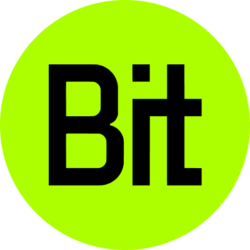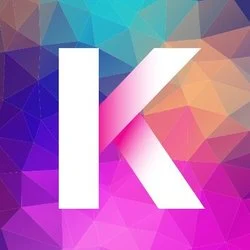A number of significant projects initiated during the ICO (initial coin offering) period have either been inactive or have ceased to exist. The bulk of the projects that are still operational need help maintaining their ongoing relevance.
Examining the critical beneficiaries during the frenzy of Initial Coin Offerings (ICOs) revealed that getting considerable cash only sometimes fixes all difficulties, and in some instances, it even makes the challenges worse.
EOS
During the 2017 ICO boom, Blumer and Larimer came up with a groundbreaking idea for an incredibly efficient blockchain; they called it EOS. By offering capabilities for both vertical and horizontal scalability, this cutting-edge platform promised to revolutionize decentralized apps.
This year, Block. One, the business in charge of EOS, successfully concluded a one-year initial coin offering (ICO) that accumulated an astounding $4.2 billion in money. It has been the most significant token sale in the world’s history up until this point.
The influence that Block. one and EOS were supposed to have on the cryptocurrency industry has yet to materialize. Instead, the firm became preoccupied with initiatives that were utterly unrelated to the primary objective it had set for itself. In recent times, a brand new exchange known as Bullish has been established, which has resulted in a substantial investment of 180 million dollars. Not only that but a significant amount of money was also invested in a social media network called Voice.
Perhaps it was the abundance of Block. They became diverted from their goals as a result of the enormous income. In the year 2021, the EOS community came together to form the EOS Network Foundation with the intention of providing independent funding for the growth of the project, which would be distinct from Block.
In May 2024, the EOS Network Foundation made very remarkable news concerning their token mechanism. They concluded that their inflationary tokenomics should be abandoned and instead implemented a model with a fixed supply. In accordance with this new approach, the maximum number of tokens that may be produced will be limited to 2.1 billion. A new point of view is introduced into the EOS ecosystem as a result of this development, which also provides a token supply that is more reliable and predictable.
When this article was written on August 23, 2018, the price of EOS was $0.52. This is a dramatic decrease of 97.7% from the cryptocurrency’s all-time high of $22.71 in April. In addition, the market capitalization of EOS is now estimated to be $770 million.
Currently active.
Telegram Open Network
Pavel and Nikolai Durov, the brothers who created the Telegram Open Network (TON), had lofty goals for their enterprise. This would have been the case if the network and its native Toncoin had ever been realized.
Communications, file sharing, and an anonymizing layer on the network might have been merged and strengthened with the help of TON.
Although it permitted other blockchain projects to proceed after paying a penalty, the United States Securities and Exchange Commission was less indulgent with TON.
TON has been subject to limitations imposed by the SEC as a result of its successful fundraising efforts, which totaled $1.7 billion. These limits include prohibiting the launch of its coin and forcing Telegram to refund its investors. Furthermore, a heavy punishment of $18.5 million was levied on the guilty party.
The brothers Durov were not easily discouraged. Eventually, it was decided that they would be incorporated into “The Open Network,” which provides functionality and capabilities comparable to those first proposed for the Telegram Open Network. A group of independent software engineers who had previously created the TON Foundation initially presented the Open Network.
After that, developers launched a Toncoin currency separately from Telegram, working independently from Telegram’s instructions despite operating freely.
Update: Revitalized and currently in operation.
Tezos
At first glance, it seemed as though Tezos had a bright future ahead of it. Arthur and Kathleen Breitman, a married pair from the United States, were the driving force behind Tezos. They provided a tale that was both distinctive and engaging, striking a chord with cryptocurrency investors.
What exactly is the idea? The objective is to create a coin that gives stakeholders the ability to actively influence the path that the Tezos blockchain will take in the future. This would make it possible for Tezos to do anything and to turn into whatever its users choose. Furthermore, it would prevent the potential of hard forks, as a democratic vote process would handle any conflicts. This would eliminate the possibility of hard forks.
In July 2017, Tezos achieved a milestone in crowdfunding that had never been seen before, successfully raising an astounding $232 million in Bitcoin and Ether through its token sale. Despite the fact that the difficulties had only begun, there was a tremendous amount of expectation coming from a variety of sources.
The development of the “democratic” blockchain halted due to disagreements among the highest-level executives. In February 2018, Gevers was persuaded to leave his position at the Tezos Foundation, but substantial progress had already been made, and support from the community had already dwindled.
A rapid intervention by the Securities and Exchange Commission (SEC) over the unregistered sales of securities was an additional adverse scenario for Tezos. As a consequence of these events, a lawsuit of the class-action sort was filed.
Tezos eventually disappeared from the public’s collective consciousness due to the company’s legal fights, disputes, internal conflicts, and disappointing defeats. On the other hand, the project is still doing quite well.
The cryptocurrency Tezos has a market capitalization of $698 million. The token’s price has decreased dramatically by 92% since reaching its highest point of $9.12 in October 2021. Its current price is $0.70.
The firm’s most recent roadmap, “Tezos X,” was presented in June 2024. This roadmap is committed to improving block speed and scalability with the adoption of “smart rollups.”
Currently active.
Filecoin
In 2017, the decentralized storage project Filecoin successfully raised an amazing $233 million. Even though the enthusiasm has subsided, the project is still operational and continues to deliver the file hosting services that were promised.
In the year 2024, decentralized physical infrastructure networks (DePINs) such as Filecoin have been a topic of discussion that has garnered a lot of attention.
However, although reaching a new high of $11.46, the price of FIL was unable to sustain this previously high level.
The token’s price has dropped 98.4% since it reached its highest point of $236.84 in April 2021. FIL’s current market capitalization is $2.2 billion, and the token price is $3.90.
Currently active.






























































































































































